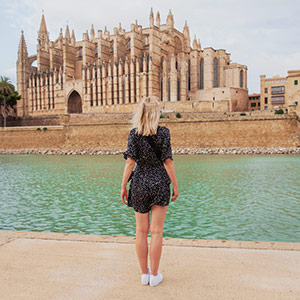
Monfragüe National Park

One of Europe's last unspoiled ecosystems
The convergence of the Tajo and Tiétar rivers in the Cáceres has created this landscape of holm oaks, cork trees, smooth mountains and enormous rocks that are home to one of the largest colonies of black vultures in the world. The only national park in Extremadura has thus become one of the best places in Spain for bird watching. But in addition to following the flight of the great birds of prey, you can witness the rutting of the deer in autumn, look out from its viewing points, climb the tower of a castle... Welcome to the place that the Romans christened as Mons fragorum: dense mountain forest.
Monfragüe National Park
In the north of the province of Cáceres (Extremadura), in the imaginary triangle formed by the cities of Cáceres, Plasencia and Trujillo.
Cáceres (Extremadura)
Cáceres (Extremadura):
- Casas de Miravete
- Jaraicejo
- Malpartida de Plasencia
- Serradilla
- Serrejón
- Toril
- Torrejón el Rubio
Carretera EX-208 km 9, a 6 km del casco urbano de Malpartida de Plasencia
10680 Malpartida de Plasencia, Cáceres (Extremadura)
10695 Villareal de San Carlos, Serradilla, Cáceres (Extremadura)
Activa JS
In images
What you need to know
-
What you will find
The black vulture is not the only star of the show at Monfragüe: there is also a significant population of Spanish imperial eagles. Watching these magnificent birds, or others such as the eagle owl or the griffon vulture, is an incredible experience. The best place to see them in Monfragüe is from the “Salto del Gitano” natural viewing point, on a cliff 300 metres high. As well as the enormous vertical rock faces, you will also discover Mediterranean forests, reservoirs, and meadows, that are home to other animals like deer, foxes and otters.
-
Routes around the Park
Most people choose to explore Monfragüe using its self-guided routes. You can choose from the Yellow Route by the Tajadilla viewpoint (8.9km, low difficulty), the Green Route by Arroyo de Malvecino-Cerro Gimio (7.9km, low difficulty), and the Red Route by Monfragüe Castle (16km, medium difficulty). By car, there are two routes with stops at the main viewpoints, which go from Villareal de San Carlos (where the visitor centre is located) to either the Castle or to Portilla del Tiétar.If you prefer a guided tour, the park organises them at the weekends. You can also take bike routes or horse riding routes along the edges of the park, as long as you have prior permission.However you decide to do it, you will enjoy discovering emblematic points like the Castle's tribute tower, where you can climb its 134 steps to revel in the incredible views from the top, or the Cardenal Bridge, as long as you go when it is not submerged under the waters of the Tajo.Map of Monfragüe National Park
-
Don't leave without...
Did you know that Monfragüe is one of the best places in Spain for observing the stars? In fact, there is an astronomical observatory in Torrejón el Rubio, with powerful telescopes and astronomical viewing points at other points, such as Arroyo Malvecino and Casas de Miravete. Another interesting visit could be the Monfragüe Cave Painting Visitor Centre.The National Park is also right in the middle of the triangle formed by the cities of Plasencia, Cáceres and Trujillo, so you could take the opportunity to visit them and try the local specialities, like migas, Iberian ham or venison stew.
Travel plans for inspiring you












